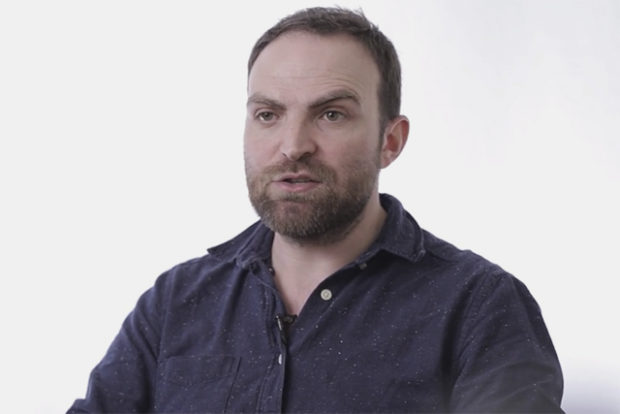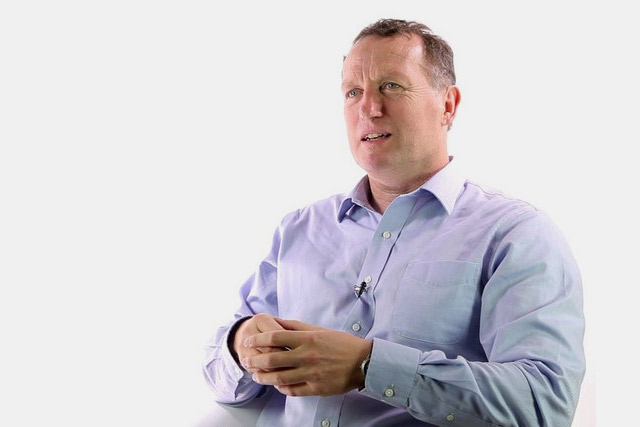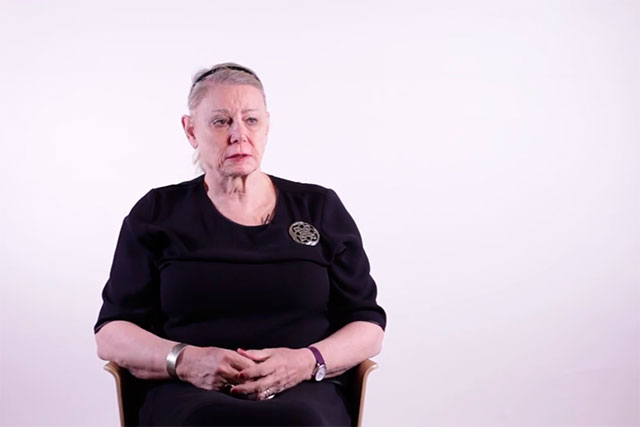Animals and Human Communication
Linguist David Adger on sound processing in animals, bonobo Kanzi and the nature of linguistic differences between animals and humans
videos | September 29, 2020
Today, I’m going to talk about the question of whether animal and human communication systems are the same kind of thing or different kinds of things. This is a really old question: it goes back well before Darwin. Darwin really crystallised that, so in The Origin of Species, he has a discussion where he’s asking the question of whether we, humans, just have more of the things animals already had. Dogs bark and monkeys squeal, and do we just do that, except we just do it more because we’re cleverer? And there’s this alternative idea, which is no, we’re just different, so the way we’re set up is different. It’s not that we’ve got more intellectual power than other animals, which we do probably, but it’s just that we’re also set up quite differently.
This is the question I want to talk about, and there’s some really interesting evidence, I think, in a way that leads us down the second line is that we’re set up differently.
It’s not so much that we’re just cleverer: there’s something about us that makes us different as far as language goes.
This idea that we’re set up differently has kind of gone through cycles in the science of linguistics over time. If we think about sounds, for example, there was a period back in the ’50s and ’60s when people discovered that human beings had this capacity to take streams of sound and cut them into discrete bits. So the difference between a ‘ta’ and a ‘da’ is not about where they’re made in the mouth but actually in the fact that my voice box switches on and starts buzzing a bit earlier in ‘da’ than in ‘ta’. There are other things going on as well in English, but that’s the main difference. That’s called the onset of voicing.
When this was discovered, it was discovered that even little babies could detect the onset of voicing differences, and they made a sharp split between the ‘d’ sound and the ‘t’ sound. The way they tested this was they used speech synthesizers: this was back in the 50s and 60s. They used speech synthesizers, and they just changed incrementally when the onset of the voice started. Essentially, they play ‘ta’, and then they move the voicing a bit further into the sound, so it sounds a bit more like ‘da’, and then it’d be varying into the sound ‘da’. They did that in tiny, tiny incremental bits, and what they found with the babies is that even really young babies just do a sharp split: they hear it as ‘ta’, and then they hear it as ‘da’, and that’s how all human languages work.
So everyone thought that humans are so special, and then there was a famous experiment done by Kuhl and Miller. They showed that, actually, we’re not that special: chinchillas can do this. What they did was they trained chinchillas, and trained them first of all to recognize the clear difference between ‘d’ and ‘t’, and then they did the same kind of experiment: with the speech synthesizer, they incremented where the voice starts, and they wanted to see whether the chinchillas would notice a sharp difference or if they would just see it just like a statistical thing.
They did it in a quite horrible way. First of all, what they did is they made the chinchillas really thirsty, they put water over the end of the cage, and then they’d say ‘da’, ‘da’, ‘da’, and the chinchillas would run over and get the water and be very happy. But sometimes they would say ‘ta’, and the chinchillas would start off going, and then they’d electrocute the chinchillas’ feet. It’s pretty horrible. But what it did was it made the chinchillas recognize that if they hear ‘ta’, they’re not going to run over, and if they hear ‘da’, they are. So they taught them that, and then they did this thing with the speech synthesizer, and they just incrementally moved things forward a little bit, and they discovered the chinchillas, just like babies, make a sharp distinction.
So we thought way back in the 50s that maybe we discovered something special about humans, this idea that humans make a categorical language split between sounds, two different categories of ‘t’ vs. ‘d’, ‘p’ vs. ‘b’, ‘k’ vs. ‘g’ and so on. But actually it turns out the chinchillas can do it, rats can do it, monkeys can do it, lizards can do it, snakes can do it, virtually everyone can do it. So it’s not remotely a special human ability.
So you might think Darwin’s right then; it is just that we use this thing in a more clever way than other animals, but other animals can do it too. So that was one big thing that looked like a kind of one goal for the Darwin side.
There are other cases that Darwin picked up on where animals also seem to have the capacity to use not so much sounds as we do but words. So you say to your dog, ‘Sit’ or ‘Run’, and the dog can learn a few English words or Russian words or whatever language it is. And there’s a very famous case where there’s a dog called Rico, a border collie, and they taught him hundreds of words. And you might think, so maybe it is just that we as humans have the same capacity as a dog or a monkey or something like that to learn distinct words, but actually what happens is we just have more power in there, And it’s certainly the case that we have more power because human babies learn ten words in a day, hundreds in a month, we learn about 10,000 words over a lifetime, and animals never really get more than a couple of hundred. So there’s some big difference there.

There was some debate in the ’60s, ’70s, and early ’80s about apes, which are our closest relatives genetically. With Kanzi, who’s a very famous ape who’s a bonobo; there were a lot of claims made for Kanzi, who was worked with by a woman called Susan Savage-Rumbaugh. She argued that Kanzi could actually put words together and create new meanings out of the words that he put together. Generally, people don’t think that that’s true anymore, and partly, the reason they don’t think it’s true is because what Savage-Rumbaugh did was quite clever. She got Kanzi to do some stuff. She would use these things called lexigrams, which were like words, and she would get Kanzi to understand the lexigrams in sequences and go and do stuff with them, like ‘put ball in basin’. And she’d go like – ‘Look, that’s amazing. I can show Kanzi these lexigrams, and he can put the ball in the basin’.
And she got a young child, Alia, and Alia could do the same kind of thing. And so Savage-Rumbaugh said, look, Kanzi’s got the grammatical skills of a three-year-old child. But actually, there’s the linguist called Rob Truswell from Edinburgh, and he’s looked very carefully at all of the data that Savage-Rumbaugh put together, and he’s taken out examples where he’s coordinated two things. So he’ll say something like ‘Put the ball and the orange in the cup’ or something like that, and Kanzi just doesn’t know what to do; it doesn’t understand that ‘ball and orange’ is a single chunk is a single grammatical unit, and that’s what’s to be put in the cup. So sometimes Kanzi will put the orange in, sometimes the ball, sometimes just wander away and do nothing. Alia, at the same time, the three-year-old kid, gets it right virtually all the time.
So it looks like Alia has actually quite different linguistic capacity from Kanzi. It looks like what Kanzi is really doing is he’s attending to the sequence of things and he’s understood that the sequence matters, but with these examples where you’re sticking two things together in the sequence, you’re saying ‘Put the ball and the orange in the cup’ where the ball and the orange is a single grammatical unit, Kanzi can’t understand that. He can’t understand that there’s a hierarchy to the sentence: he only sees the sequence.
Now, Alia, who’s the three-year-old human child, gets the fact that the language is organized like a hierarchy straight. So that’s really quite interesting because that shows that Kanzi is clearly very clever. He’s as clever as a three-year-old child in many, many other respects, and he’s got a real incredible proficiency with language; he’s learned like five hundred, I think, of these lexigrams, and he’s able to understand sequences, but he just can’t get the hierarchy. The hierarchy is what’s at the heart of human language; the hierarchy is the thing that allows us to create meanings in almost unbounded ways. So we can put elements together, and then we create a single chunk, we can put that together with something else in a larger chunk, and then we can do just what I’m doing right now, which is just speaking and speaking and speaking… But we’ve not found a single animal that can do anything like that.
There’s another really interesting case where it looks like animals can do stuff with language, but they can do things with language in a quite different way than humans can. This is the case worked by Juan Toro in Barcelona: he compares rats, whom you might not think about as the most linguistic of creatures and babies. And he shows that rats are better at certain linguistic tasks than babies are. The particular task is trying to see whether rats can learn a specific rule of a sequence of syllables. What he does is he looks at examples like ‘dah-gah-re’ or ‘nu-mu-ze’, ‘loo-goo-bah’ where you’ve got the same vowel, the same vowel and then a different vowel.

But actually, it’s really interesting because if you look at human languages, we know of many human languages that create rules by messing around with vowel sounds. The Semitic languages work like this: Hebrew, Arabic, Tigrinya and so on. What they do is they change the tense of verbs, or they turn verbs into nouns by changing the vowel patterns but not by changing the consonant patterns. We don’t know of any language that would be like the inverse of Hebrew, where the vowels would be the word, and you mess around with the consonant parents to make it past tense or future tense. So it seems that in some weird and interesting way, we, human beings, have a limited capacity to do certain things with the structures of language and that limited capacity we have is not just looking at statistical patterns: it’s something very special to us, and that’s something that we can see actually happening in the languages we speak. I think it means that Darwin, in the end, was wrong; that is, humans have something that’s just quite different from what animals have. It’s not that we’re more clever; it’s just that we’re differently clever.




























